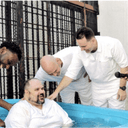“The assumption that all victims’ families favor the death penalty is so entrenched that families who oppose the death penalty sometimes experience discrimination within the criminal justice system from prosecutors, judges, or court-appointed victims’ advocates.”
There is a commonly held belief that use of the death penalty is always supported by the friends and families who have lost loved ones to violence. Prosecutors and elected officials often argue that only the death penalty will bring them the closure and justice they deserve. Family members are invited to witness executions in capital cases on the theory that doing so will help meet their needs for retribution and closure.
While this feeling may be true for some, others feel differently, including some who oppose the death penalty in all circumstances.
Studies suggest use of the death penalty does not always bring families the closure they seek and may actually interfere with the healing process. In addition, the lengthy nature of capital cases, the emotional difficulty of grieving after an act of violence, and the lack of funding for victim services often leave victims’ family members without the support they need.
Fact: Capital cases are lengthy, and physically and emotionally exhausting for many victims’ families.
Capital cases are always lengthy, given the procedural safeguards in the system intended to protect individuals from wrongful conviction, and the process can slow the healing process for grieving family members. Marilyn Armour, the Director of the Institute for Restorative Justice and Restorative Dialogue, has worked with homicide survivors for over two decades. She and fellow researcher Mark Umbreit published a study in 2012 comparing how victims’ family members cope with loss in Texas, a death penalty state, and Minnesota, which does not have the death penalty. Their research interviewed family members at different stages after the initial sentence and found that participants from Minnesota showed a marked decrease in grief symptoms over time, unlike those from Texas. The Minnesota families were able to move on sooner, as they did not have to repeatedly relive their trauma through the lengthy appeals process, testifying about their loss and facing the defendant in court.
Professors Amour and Umbreit identified the “critical dynamic” at play in victim recovery as “the control survivors felt they had over the process of getting to the end.” Victims’ family members in Minnesota reported feeling greater control over their healing process “likely because the appeals process was successful, predictable, and completed within two years after conviction[.]” In contrast, the study noted that the appeals process in Texas was “drawn out, elusive, delayed, and unpredictable.” That generated “layers of injustice, powerlessness, and in some instances, despair.” Both study groups experienced high levels of grief and sorrow, but Minnesotans, “no longer having to deal with the murderer, its outcome, or the criminal justice system,” had the ability and the energy needed “for personal healing.”
Fact: Executions do not mean closure for all victims’ family members.
In the latest developments of the anticipated Idaho murder trial of Bryan Kohberger, prosecutors who negotiated a plea deal, removing the possibility of the death penalty, explained their decision to the victims’ families. According to the Idaho Statesman, a letter sent to the families stated that the plea was the most just outcome, as it would spare them from “the uncertainty of decades of post-conviction appeals.” Among the four affected families, one family was vocal about the plea deal. The family of Kaylee Goncalves wrote on Facebook, “We are beyond furious at the state of Idaho. They have failed us.”
While prosecutors in the Kohberger case eventually agreed to dismiss the death penalty, this approach is not consistent across all cases. In other cases, prosecutors argue that a death sentence is the only sentence which can provide closure to the victim’s family. During the Texas trial of Paul Storey, for example, prosecutors lied to the jury and said that “[i]t should go without saying that all of Jonas [Cherry’s] family and everyone who loved him believe the death penalty was appropriate.” In reality, Mr. Cherry’s parents opposed the death penalty and eventually released a video supporting Mr. Storey’s clemency request, saying: “Paul Storey’s execution will not bring our son back.”
While victims’ families hold different views on the death penalty, some reject the idea that complete closure can ever be achieved after a loss to violence. As the previous examples show, grief is very personal and families process it in varied ways. A 2009 study by Nancy Berns explored the notion of closure in the context of the death penalty and found that for many family members of the victims, closure is often elusive. For the study, Professor Berns reviewed studies on death penalty rhetoric and the sociology of emotion. Professor Berns notes “many families of murder victims argue that there is no such thing as closure and therefore disdain the word.” She explains how the emotional effect of executions on victim’s family members is not straightforward and leaves some with “emotive dissonance – they do not feel the closure promised … it still hurts” or they come away “even angrier.”
Fact: Capital cases divert resources that could be used to support victims’ family members.
Implementing capital punishment requires more resources, which could be allocated to support the needs of victims and their families instead. The Ohio Attorney General estimated in 2023 that “the extra cost of imposing the death penalty on the 128 inmates currently on Death Row might range between $128 million to $384 million.” By way of contrast, in 2022, the Ohio legislature appropriated $9 million in 2024 and $7 million in 2025 for Ohio’s Crime Victim Compensation Program. The study estimated in 2023 that “the extra cost of imposing the death penalty on the 128 inmates (sic) currently on Death Row might range between $128 million to $384 million.” In 2022, the Ohio legislature appropriated $9 million in 2024 and $7 million in 2025 for Ohio’s Crime Victim Compensation Program.
“Imagine all the time, energy, and resources we spend on the death penalty system instead going toward programs that help address the trauma of poverty and neglect – to truly improve lives. Or imagine showing the people who endure and survive violence – disproportionately people of color – that our lives matter and that we deserve healing.”
“At one time I believed that the death penalty would benefit people like my mother and me, but in reality nothing could be further from the truth … We should take the money that we waste on the death penalty and put it toward better equipping [the police], or toward other programs that actually reduce crime… It is important that there is funding to provide services that will help grieving and traumatized families like ours.”



